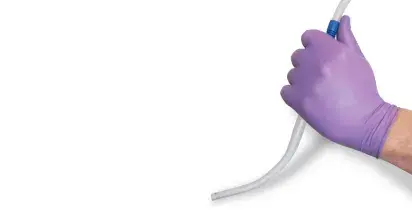
Suction Catheter
DuCanto®
“A simple and effective tool to support routine and emergency airway management.”
- James C. DuCanto, M.D.
Major internal diameter
Its inner diameter is larger than that of a standard Yankauer suction tip, making it easier to extract fluids and solids. The larger suction lumen significantly reduces the likelihood of obstruction in an emergency situation.
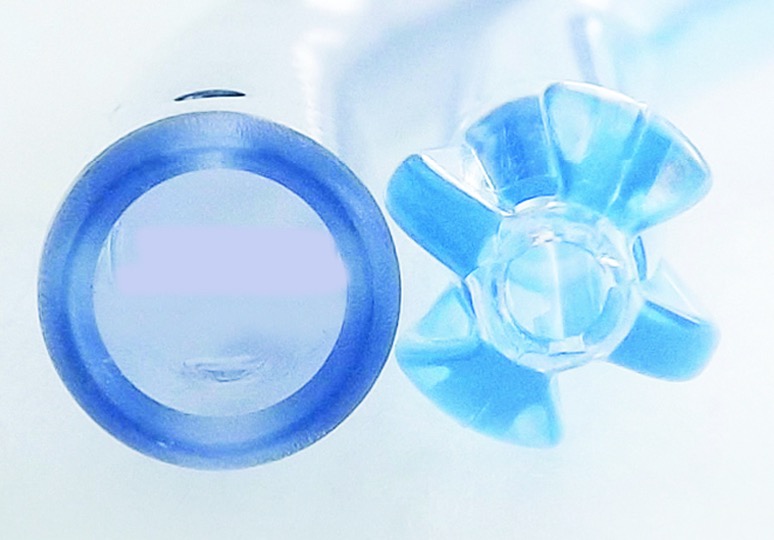
Designed to fit oropharyngeal anatomy
The hypercurved catheter is shaped more closely to the patient's airway, making it easier to position and work with other complementary devices used to clear the patient's airway.

Can be used in the SALAD technique
The SALAD (Suction Assisted Laryngoscopy and Airway Decontamination) technique involves continuous suction of secretions, vomitus, blood, and other materials using the DuCanto catheter, allowing the physician to safely intubate the patient using direct laryngoscopy or video laryngoscopy.
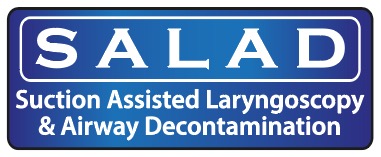
The DuCanto™ Catheter is made of a rigid PVC material.
The larger internal diameter allows for the aspiration of larger elements that would clog any other catheter.
Suction will always be available for perfect visualization of the airway, minimizing complications (bronchoaspiration)
Measures:
Shaft Diameter | 6,6 x 13,9 mm |
Shaft Length | 236.22 mm |
Comparison of DuCanto Catheter with Yankauer
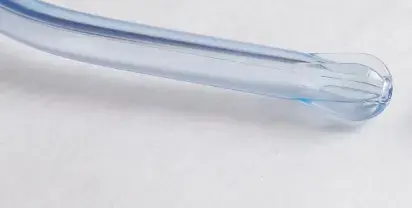
Standard Yankauer
- Designed in 1907 by a surgeon to extract blood and saliva during a tonsillectomy
- Small distal openings to allow fluid removal
- It often has a thumb port so that suction can be applied and discontinued.
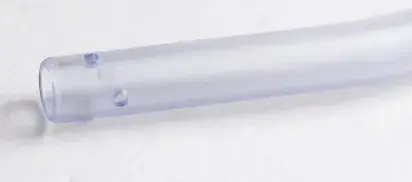
DuCanto catheter
- Designed in 2016 by an anesthesiologist to aspirate material from the upper airway during intubation
- Large lumen (6.6 mm) for removal of emesis, clots and tissue during resuscitation.
- There is no thumb loop, so suction is “always on” and material is removed from the airway, even when the clinician’s hands are full.
- Its anatomical shape allows the distal tip of the SSCOR DuCanto catheter to rest near the upper esophagus to continuously suction the hypopharynx during intubation (SALAD Technique).

What is the SALAD technique?
The SALAD (Suction Assisted Laryngoscopy and Airway Decontamination) technique involves constant suction provided by the SSCOR DuCanto Catheter, developed by Dr. James DuCanto and SSCOR, Inc.
After clearing the airway of contaminants, the catheter can be left in place to the left of the laryngoscope blade, continuously removing blood, vomitus, and other material. The physician can intubate with the catheter in place either through a video laryngoscope or directly.
Why is the SALAD technique important?
Una succión efectiva puede marcar la diferencia en la reanimación de un paciente: despeja la vía aérea para poder intubar y elimina material que de otra manera podría entrar en las vías respiratorias inferiores. La aspiración de material extraño puede causar *neumonía, que retrasa la recuperación del paciente o puede, incluso, causar su muerte.
La neumonía causada por aspiración o ventilación mecánica es probablemente la complicación más importante en los pacientes en estado comatoso después de un paro cardíaco, que ocurre en hasta el 50% de los pacientes después de un paro cardíaco fuera del hospital. – “Síndrome de paro cardíaco: Epidemiología, fisiopatología, tratamiento y pronóstico” -V Jerry P. Nolan et al